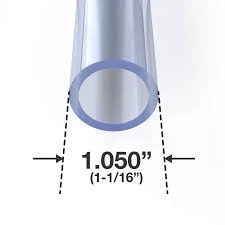Nov . 22, 2024 12:45 Back to list
blue hdpe sheet
The Versatility of Blue HDPE Sheets in Various Industries
High-Density Polyethylene (HDPE) sheets have gained immense popularity across various sectors due to their durability, chemical resistance, and lightweight properties. Among the various colors and types available, blue HDPE sheets stand out not only for their aesthetic appeal but also for their functionality. They are widely used in applications ranging from construction to food processing, making them an essential and versatile material.
What is HDPE?
High-Density Polyethylene is a thermoplastic polymer made from petroleum. It is characterized by its high strength-to-density ratio, which allows it to withstand challenging environments. HDPE sheets are produced through an extrusion process, leading to a consistent thickness and smooth surface finish. The blue color comes from additives that enhance the sheet's visibility and compliance with certain industry standards.
Key Properties of Blue HDPE Sheets
1. Durability One of the standout features of blue HDPE sheets is their exceptional durability. They resist impact, moisture, and harsh chemicals, making them ideal for both indoor and outdoor applications.
2. Chemical Resistance These sheets are non-reactive to many acids and bases, providing significant advantages in environments where chemical exposure is a concern, such as in laboratories or chemical plants.
3. Lightweight Unlike traditional materials such as metal or wood, HDPE sheets are lightweight, which simplifies handling, installation, and transportation.
4. UV Stability The blue coloration in HDPE sheets often includes UV stabilizers, allowing them to withstand prolonged exposure to sunlight without significant degradation.
5. Ease of Fabrication Blue HDPE sheets can be easily cut, welded, or drilled, allowing for customization to fit specific project requirements.
blue hdpe sheet

Applications of Blue HDPE Sheets
The distinctiveness of blue HDPE sheets makes them suitable for numerous applications across various industries
1. Construction Due to their sturdiness and moisture resistance, blue HDPE sheets are frequently used in construction for temporary barriers, partitions, and waterproofing applications. They serve as an effective option for creating strong, impervious surfaces that can withstand heavy use.
2. Food Processing The blue color is often used in food processing environments to adhere to hygiene and safety standards. The sheets are frequently utilized for cutting boards or surfaces that need to be easily identifiable for sanitation purposes, as the blue color helps prevent cross-contamination.
3. Marine Applications Blue HDPE sheets are resistant to saltwater and other harsh marine conditions, making them ideal for boat components, docks, and other marine structures.
4. Agriculture In agricultural settings, these sheets can serve as liners for ponds and agricultural tanks. The color helps with visibility, and the material withstands exposure to various agricultural chemicals.
5. Signage The bright blue color and smooth surface make HDPE sheets an excellent choice for signage. They can be printed on or painted, and their durability ensures that the signs remain intact under various weather conditions.
Conclusion
Blue HDPE sheets offer manufacturers, builders, and other professionals a versatile solution that combines functionality and aesthetic appeal. With their extensive range of applications and impressive characteristics, these sheets are an essential material in various industries. Whether used for construction, food safety, or agricultural purposes, the significance of blue HDPE sheets continues to grow as industries seek durable and reliable materials. As technology advances, the production methods and applications for HDPE sheets will likely expand, ensuring that this remarkable material remains at the forefront of innovative solutions in a wide range of fields.
-
High-Quality PPR Pipes and Fittings Durable ERA PPR & PVC PPR Solutions
NewsJul.08,2025
-
Black HDPE Cutting Board - Durable, Non-Porous & Food Safe HDPE Plastic Cutting Board
NewsJul.08,2025
-
High-Quality CPVC Panel Durable HDPE & PVC Panels Supplier
NewsJul.08,2025
-
Double PE Welding Rod Supplier - High Strength, Durable & Versatile Welding Solutions
NewsJul.07,2025
-
High-Quality PVC-O Pipe Supplier Durable 75mm PVC Pipe & Connections Leading PVC Pipe Company
NewsJul.07,2025
-
HDPE Drainage Pipe Supplier – Durable & Corrosion-Resistant Solutions
NewsJul.06,2025

